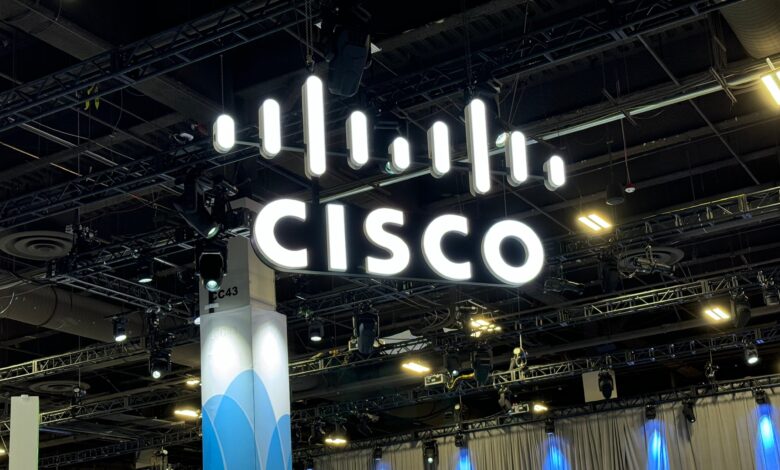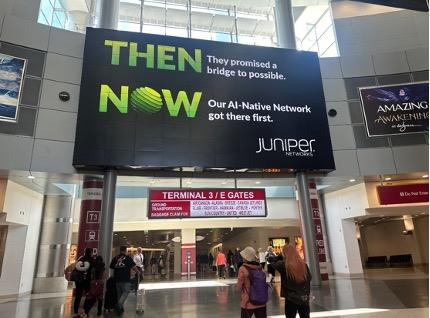AI Caramba! Cisco’s artificial intelligence blitz

- A slew of announcements in Vegas establish Cisco’s ability to deploy AI as an essential catalyst of enterprise businesses.
- But beneath the AI story is an even more significant, world-changing strategy
- Nothing less than the long-term relevance of the US in global comms depends on Cisco reinventing itself to enable the “Infrastructure of Everything”
Cisco wrapped its annual customer shindig and analyst conference this week in the heart of the American nightmare, Las Vegas.
It’s evident from this event where Cisco thinks its next big success is coming from: artificial intelligence. Of the seven big announcements that it’s making here, five of them are AI-based. Partly, this is the result of Cisco’s need to message Wall Street that it’s hyper-focused on monetizing this year’s market-moving tech trend.
That doesn’t mean that it’s a bad strategy. Without the right network, AI is nothing. Cisco is by far the largest US vendor of networking solutions, and it’s been doing market-leading work on upgrading Ethernet to handle the demands of AI traffic, which it continued here with the announcement of its cloud-managed, Ethernet- based, Hyperfabric data centre infrastructure product – the result of a JV with NVIDIA.
These factors make Cisco perfectly placed to profit from accelerating demand for AI everywhere.
A Real Artificial Intelligence Strategy
My initial reaction to Cisco’s slew of AI announcements was fear that it might try to sell AI in the same way as it sold routers, as an exciting, high-performance point product.
AI is the opposite of a point product; it is ubiquitous, embedded throughout the network. You can’t sell AI like a terabit router. What organizations need is the backstory, the context, the strategy that makes sense of all these AI activities to build a rationale for investment and implementation.
My worries about point-product-creep were erased during the Cisco Live plenary sessions, delivered to 22,000 customers and staff, offering a wealth of insightful information and real-world examples of how AI can improve enterprise businesses.
Which is super, if you’re an IT manager responsible for enterprise business software today. And that’s the demographic that Cisco Live is pitched to.
Infrastructure of Everything
However, by focusing on the here and now of what Cisco’s IT customers need from AI, the vendor skimmed over a more important mega-trend, one that Cisco is well aware of, and in which it will be a leading participant.
That mega-trend is not AI, although that technology has an essential role in the transformation.
AI will only fulfill its potential when it is tightly integrated with several other virtual technologies.
One of these technologies is the cloud-native network. The others are predictive analytics, automation, orchestration, observability, and security. Together these combine to support Smart Cloud networks.
Smart Cloud fundamentally changes the role of communications technology, from providing a way for people to communicate or exchange information, to acting as a digital shim: an intelligent abstraction layer that allows formerly distinct physical and digital infrastructure to be deployed in hybrid architectures.
A real-world example may help; you can see one here (of course it’s in China).
In this new Smart Cloud world, different types of infrastructure are no longer siloed but rather are installed holistically to create an intelligent, autonomous foundation which supports any type of industry, business, or societal institution and does so in a way that delivers radical improvements in cost, sustainability, and productivity, as well as fundamentally altering the nature of what it is like to be an inhabitant of this planet.
I call this the “Infrastructure of Everything,” and it’s the endpoint of everything the communications industry has worked towards for the last 150 years.
Cisco and Smart Cloud
Cisco chose not to focus on its Smart Cloud capabilities in Vegas, but I know it has an exceptional Smart Cloud strategy, and all of the pieces and people required to implement it, because Jonathan Davidson, EVP and GM of Cisco Networking, personally walked me through it at its San Jose HQ earlier this year. It was a superb exposition of where our industry, and the world, is headed, and in the great tradition of technology analysts everywhere I wrote it all down and then told everyone I’d thought of it.
While Cisco’s customers were visibly delighted by the focus on its pragmatic AI strategy in Vegas, part of me was disappointed by its decision to skim past Smart Cloud (sad face Steve).
It also gave me pause, because Smart Cloud and the Infrastructure of Everything is happening now; it’s not the subject of a futuristic Ted Talk.
Companies and governments outside the US are already implementing Smart Cloud to transform transportation, healthcare, energy, manufacturing and pretty much everything else. I know this for a fact because I’ve seen these deployments first hand around the world.
Once you’ve experienced a Smart Cloud network in person, it’s impossible not to be uncomfortably aware of how far the US is behind the first movers. (If it makes you feel any better, the UK is even further behind – hilariously so.)

(Fierce Network )
So there’s more at stake here than Cisco’s ability to return value to shareholders and customers. Over the next decade, Smart Cloud-enabled Infrastructure of Everything will go from beachhead to ubiquity. And the fact that 99.999 people in the communications industry, including self-important analyst firms like Gartner, haven’t grasped this yet doesn’t mean it isn’t happening.
It’s happening. Now. Deal with it.
Cisco’s ability to prevail in this new market will dictate not only its long-term outlook, but also whether the United States continues to be a force in global communications infrastructure. In case you hadn’t heard, China has been kicking America’s ass in comms tech for quite some time.
The Smart Cloud fight is Cisco’s to win or lose. Of all US tech companies (and Cisco is the most doodle dandy of them all, y’all) Cisco is by far the best qualified in terms of scale, finances, and technology to take on this essential national mission.
This could also be Juniper territory, of course, but Juniper is getting bought by HPE (oof).
Last time HPE tried to participate in a major industry transition it did not go well (click here and scroll down to read my assessment of HPE back in 2017).

(Fierce Network )
Cisco has its work cut out for it as America’s tech champion. This week it announced a $1 billion AI investment fund. But last week, China threw another $47.5 billion to free itself from using US chips, including AI. This is not a level playing field.
Policy is the issue. China’s government is driving the use of Smart Cloud technology to build the Infrastructure of Everything throughout China and across the world, particularly in the Global South (an abbreviation for all those countries American politicians haven’t heard of but – what the heck – might just bomb anyway).
In the US, conversely, the government is leaving the advanced comms stuff to the private sector, while spending a fraction-of-1% of what it spends on stuff that kills people to deliver broadband to the 26 million of its citizens still using dial-up modems, smoke signals, and ham radios. Priorities much?
The American government’s lack of a national integrated next-gen infrastructure strategy or financial support is a shameful policy blunder for the ages. By the time our legislators realize that a free market economy alone won’t allow it to compete on a global tech playing field, it could well be too late to do anything about it.
Right now, the US tech market, and Cisco, are on their own. (No pressure, Mr Robbins).
The History, Man
Cisco hosts its media and analyst event here at the swanky Four Seasons, which pretends it isn’t in Las Vegas by camouflaging itself inside the Mandalay Bay resort. But it was full, so I’m staying at The Excalibur (forsooth).
The last time I stayed at this medieval-themed hotel was in 1991, for the Comdex show (see photographic evidence). Cisco had just had its IPO, based on the success of its first router, a market-conquering point product that defined the company for the next two decades.

(Fierce Network)
32 years later and Cisco’s success, and, to a large degree, America’s, depends on whether it can move beyond the enterprise culture that currently defines it, and which is symbolized in the dystopian location of this otherwise exceptional colloquium, to build the infrastructure that will literally change the world.



